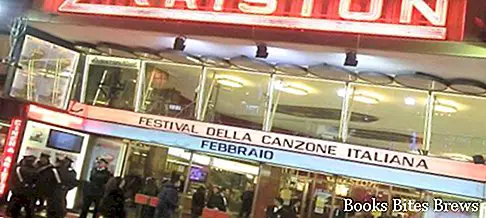What to see in San Remo, tourist itineraries including the main monuments and places of interest, including the Duomo, Piazza Eroi Sanremesi, La Pigna, Madonna della Costa Sanctuary, Palazzo Borea d’Olmo, archaeological museum, flower market and municipal casino.
Tourist information
Located in Liguria in the Riviera di Ponente, in the stretch between Cape Verde and Capo Nero, San Remo is a famous seaside resort, known internationally as well as from a tourism point of view also for the cultivation of flowers and for the Italian song festival .
With the first human settlements in the area dating back to prehistoric times, San Remo certainly already existed in Roman times.
During the Middle Ages it belonged to the Church of Genoa, which at the end of 1200 sold it to the Doria and Mari families.
Later San Remo became a free municipality and in 1815 it was annexed to the Savoy kingdom.
The main monuments include the Duomo, built in 1200 over an earlier church, of which some structural remains have remained.
The high bell tower dominates the Cathedral of San Siro while many works of art are preserved inside.
To the side of the cathedral is the medieval baptistery, which was renovated in 1600.
Next to it is the rectory of the twelfth century, characterized by the presence of a remarkable cloister, while in front there is the sixteenth-century oratory dedicated to the Immaculate Conception.
A short distance away is the Piazza degli Eroi Sanremesi, the place where the market takes place and from where the oldest part of the town begins, called the Pigna and characterized by tiny medieval streets, overlooked by tall houses frequently joined by arches.
In a dominant position on the neighborhood is the Sanctuary of the Madonna della Costa, dating back to the seventeenth century.
Recommended readings- San Remo (Liguria): what to see
- Liguria: Sunday day trips
- Gallinara (Liguria): what to see on the island
- Noli (Liguria): what to see
- La Spezia (Liguria): what to see
What see
The Palazzo Borea d’Olmo, dating back to the fifteenth century but later remodeled, has an interesting Baroque facade, embellished with two remarkable portals dominated by sculptures.
The interior houses the civic archaeological museum, where prehistoric and Roman finds are exhibited.
Nearby are the flower market and the municipal casino, an Art Nouveau building built between 1904 and 1906 by Eugenio Ferret, home to important city events.
Continuing on, you reach Corso Imperatrice, an elegant road along the coast where the Russian church is located, built in 1874 following the stay of the Russian empress Maria Aleksandrovina.
Concerts are often held in the Marsaglia park, equipped with an auditorium.
Corso Cavallotti is home to the Villa Comunale, which includes vast gardens, and Villa Alfred Nobel, the residence where the famous scientist ceased to live.
From this place begins Corso Trento and Trieste, a suggestive pedestrian promenade.
In Corso Matteotti there is the Ariston Theater, which is the place where the San Remo Festival of Italian songs takes place every year.
Nearby, 8 km away is Bussana Vecchia, an ancient village which was destroyed following the earthquake of 1887 but rebuilt by Italian and foreign artists, who have opened numerous shops and artisan shops there.
Among the excursions, worthy of note is the one in Baiardo, an ancient village about 24 km from the center, where remarkable ancient testimonies are preserved, including the Palazzo dei Conti di Baiardo, the remains of the Church of San Nicolò and, a short distance from the inhabited, the small church of San Gregorio.
At 7 km there is Ceriana, an interesting medieval village that has well preserved the original urban layout.
Monte Bignone, which is 12 km away and can also be reached by cable car, is an evocative place from which to enjoy an excellent panorama towards the coast and the hinterland.




